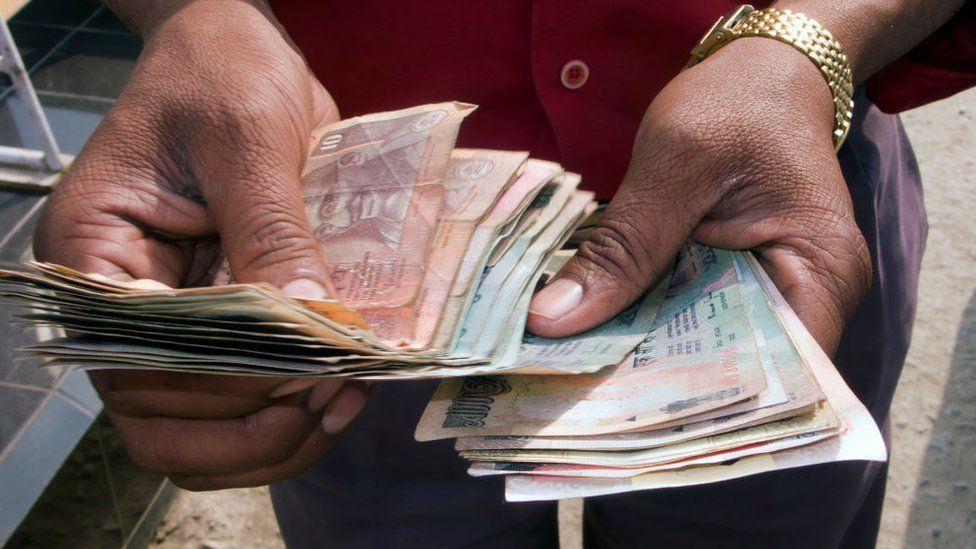India’s Current Account Deficit Dropped To $18.2 Billion, Which is 2.2% Of The Country’s GDP In Q3: RBI.
India’s current account deficit (CAD) continued to decrease, from 4.4% of GDP in the quarter ending in September to $18.2 billion, or 2.2 percent of GDP, in the quarter ending in December. This change was attributed to a decrease in the merchandise trade deficit as well as strong services and private transfer receipts.
Since the goods trade deficit has decreased by more than half, the third-largest economy in Asia may be seeing a decline in domestic demand.
The difference between the money a country makes from selling commodities to other countries and the money it spends on purchasing goods and services from those same countries is known as the current account deficit (CAD). A country is said to be in a deficit if the value of the products and services it imports exceeds the value of those it exports. The difference between the two values is what is called the current account deficit (CAD).
Although having a current account deficit is not necessarily bad, it can indicate that a country is spending more than it earns. A nation can maintain financial stability while having a current account deficit if it uses external debt to fund investments that offer higher returns than the debt’s interest rate.
Yet, if a country’s existing debt levels cannot be paid off with its projected future earnings, it risks becoming insolvent.
A key indicator of the external sector, the CAD of India, had increased to 3.3% of GDP in the first half of 2022–2023 from a comparable 0.2% in 2021–2022 due to a substantial rise in the merchandise trade deficit.

According to the Reserve Bank of India (RBI), a reduction of the merchandise trade deficit to $72.7 billion from $78.3 billion in Q2 and strong services and private transfer receipts were the main factors contributing to the reduced CAD in Q3FY23.
ICRA’s Nayar said the CAD for Q3 has gone substantially below the forecasts, resulting in a compressed print of US$67 billion for April-December 2022. This follows the lower revision in the Q2 FY2023 current account deficit.
Nayar added, they estimate that the average trade deficit would be significantly reduced in Jan-Feb 2023 compared to the previous three months, which will cause the CAD to decrease even further to $10-12 billion in Q4 FY2023. We estimate the FY2023 CAD at $77-80 billion (-2.3% of GDP) based on this, which is very restrained compared to the levels that were feared in mid-2022.
The provisional estimate for the CAD for the period of July to September, which was $36.4 billion and an all-time high for a quarter, has been dramatically reduced downward, owing to a downward adjustment in Customs data, according to the central bank.
According to the RBI, services exports increased by 24.5% year over year (YoY), driven by growth in software exports as well as business and tourism services. Both sequentially and year over year, net services receipts increased.
Net outgo from the primary income account, which reflects investment income payments, was $12.7 billion as opposed to $11.5 billion in the prior year.

Indians who work overseas sent home remittances that increased 31.7% year over year to $30.8 billion.
The adverse macroeconomic environment around the world was reflected in the foreign direct investment, which on a net basis more than halved to $2.1 billion from $4.6 billion a year earlier.
However, the third quarter of 2021–2022 saw a $5.8 billion outflow from net foreign portfolio investment, in a contrast to inflows of $4.6 billion in the December quarter.
The third quarter of the current fiscal year had net inflows of $2.6 billion for non-resident deposits, up from net inflows of $1.3 billion in the same quarter last year.
On a net basis, external commercial borrowings doubled from $0.4 billion in Q3FY22 to $2.6 billion.
In Q3 FY23, foreign exchange reserves climbed by $11.1 billion, compared to $0.5 billion in the same quarter last year.

India’s current account deficit needs to be constantly monitored, according to the economic survey.
It states that the CAD may continue to widen so long as prices are high, but the nation’s economy is still doing well.
The report goes on to predict that the Indian Rupee may face devaluation pressure if CAD widens much more. To maintain a manageable external situation overall. India has enough foreign exchange reserves to finance CAD and participate in the foreign exchange market to control currency volatility, it says.
Governor of the Reserve Bank of India (RBI), Shaktikanta Das, has stated that India’s current account deficit is “eminently manageable” and within viable bounds. He emphasized how resilient the Indian economy is, taking support from its macroeconomic fundamentals, despite the hostile and unstable foreign context that it is currently operating in.
Das noted that while the sluggish demand is affecting item exports, at the same time, the remittances and service exports continue to grow. The trade deficit is partially mitigated by the huge surplus in the net balance for services and remittances.
According to Shaktikanta Das, the third quarter of 2022–23 had a 24.9% increase in services exports year over year, driven by software, business, and travel services. In 2023, spending on software and IT services are estimated to continue high.
Also, from April to September 2022–2023, India’s remittance growth was almost 26%, exceeding the World Bank’s annual forecast by a significant margin.
The Governor stated that this is estimated to continue being strong due to the Gulf countries’ improved economic prospects and that the net balance for services and remittances is anticipated to continue being significantly in excess, partially balancing the trade deficit.
Edited by Prakriti Arora



